Out of This Century: Peggy Guggenheim, Art & Literature
By Elodie Barnes | On May 3, 2024 | Updated May 5, 2024 | Comments (0)
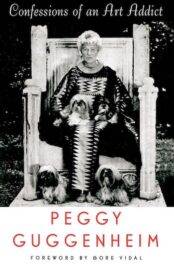
Peggy Guggenheim (August 26, 1898 – December 23, 1979) was an American art collector, writer, and socialite. She was known for her extensive contemporary art collection, which spanned the range of Surrealism, Cubism, and abstract expressionism, and for her patronage of dozens of artists.
She was also a passionate supporter of writers and literature. Close literary friends included Djuna Barnes, Mary McCarthy, Antonia White, James Joyce, Samuel Beckett, and Emma Goldman, many of whom she supported financially. Her autobiography, Out of This Century, is an incisive and witty account of her life.
An “excessively unhappy” childhood
Peggy (Marguerite) was born in New York to Benjamin Guggenheim and Florette Seligman. Benjamin was one of seven brothers who, along with their father Meyer, had built their family’s fortune in the late 19th century from silver, copper, and lead mining. Florette came from a leading banking family.
Peggy, along with her two sisters Hazel and Benita, grew up with a privileged lifestyle — even her doll house had crystal chandeliers — but she later wrote of her childhood as being “excessively unhappy.”
Her mother was eccentric, prone to verbal repetition, while her father kept several mistresses and was rarely home. Peggy, Hazel, and Benita were all tutored at home and had little in the way of friendship or companionship outside of each other.
Peggy’s father died in 1912, one of the drowning victims of the Titanic disaster. The family then was forced to rely on the generosity of her uncle Solomon (who later established the Solomon R. Guggenheim Foundation and opened the Guggenheim Museum in New York) after discovering that Benjamin had squandered much of the family fortune.
The literary worlds of New York and Paris
Peggy gained independence at age nineteen when she came into an inheritance of $450,000 (around $8 million today) from her late grandfather. However, this did not stop her from taking a job as a clerk at Manhattan bookstore The Sunwise Turn.
The shop was founded and run by Madge Jenison and Mary Horgan Mowbray-Clarke and served as a salon and gathering place for writers such as F. Scott Fitzgerald, Amy Lowell, Alfred Kreymborg, John Dos Passos, and Peggy’s cousin Harold Loeb.
The people she met there inspired her a lifelong love of literature and for the bohemian. With her new financial freedom, she donated money to the bookshops’ various ventures, which included functioning as an exhibition and performance space as well as publishing books and poetry broadsides. She also supported the New York avant-garde magazines such as The Little Review and Broom.
When she was 23, Peggy traveled to Europe and fell in love with Paris. She also fell in love with American writer and artist Laurence Vail, and they married within months. Through him, she found herself at the heart of American expatriate society and Parisian bohemia, and many of her acquittances of this time — Marcel Duchamp, Man Ray, Constantin Brancusi, and Djuna Barnes — were to become lifelong friends.
Peggy and Laurence had two children together, Sindbad (born in 1923) and Pegeen (born in Switzerland in 1926), and eventually settled in Pramousquier in the south of France.
Emma Goldman and Emily Coleman
Peggy’s marriage was already floundering by the time of the move to Pramousquier. Laurence turned out to be a violent alcoholic, and by 1928 Peggy was thinking of leaving him. It was in this turbulent atmosphere that she met Emma Goldman, the writer, activist, and anarchist revolutionary who was beginning work on her autobiography.
Peggy summed it up succinctly in Out of This Century:
“In the summer of 1928, Emma Goldman was living in St Tropez in a charming little house I had given her. She was engaged in writing her memoirs. We had finally convinced her that she must do this, and a fund had been raised to give her the wherewithal to live during this period. I headed it and continued to add to it whenever necessary…”
The “fund” ultimately amounted to around $4,000, much of it donated by Peggy herself, but with other contributions from American admirers of Emma’s work such as Edna St Vincent Millay and Theodore Dreiser. Goldman’s two-volume autobiography Living My Life was made possible by the fund.
It was through Goldman that Peggy met Emily Coleman, who was to become one of her closest (and most infuriating) friends.
“[Emma Goldman] had for a secretary, as she couldn’t put two words into readable English, a mad American girl called Emily Coleman,” Peggy later wrote. “Emily, unlike most people who are mad, did not hide it … She was passionately interested in people and in literature and life … [she] insisted that she was a writer herself and was merely helping Emma out in her dilemma.”
Emily was indeed a writer herself, although much of her work would never be published. Her diaries (collected in 2012 by Elizabeth Podnieks as Rough Draft) are one of the most comprehensive, frank, and witty accounts of the modernist period in Paris and London, while her single novel, The Shutter of Snow (1930), is now considered to be a forerunner of Sylvia Plath’s The Bell Jar, dealing as it does with motherhood, mental illness, and postpartum psychosis.
Emily often received small handouts from Peggy but more often persuaded her to give the cash to other writers instead. Over the years, Peggy supported dozens of writers, including George Barker, James Joyce, Mary McCarthy, and Samuel Beckett.
Djuna Barnes particularly benefitted from Peggy’s sometimes reluctant generosity and Emily’s altruism. Often, the only money Djuna had was the stipend of $40 a month. Under pressure from Emily, the stipend was raised to $100 plus a lump sum to cover outstanding debts.
. . . . . . . . . . .
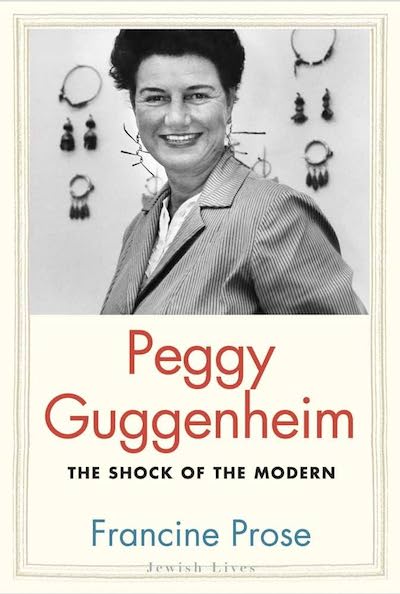
. . . . . . . . . . .
“Hangover Hall”
In 1932, when Peggy’s divorce from Laurence was finalized, she moved to England with her new lover, John Holms. Laurence retained custody of Sindbad.
During the summers of 1932 and 1933, Peggy and John rented Hayford Hall on Buckfastleigh Moor in South Devon. Already known as the possible inspiration for Conan Doyle’s Baskerville Hall, over these two summers the historic estate became the home of what was effectively a live-in modernist salon.
Guests included Antonia White, Emily Coleman, and Djuna Barnes, who wrote much of her masterpiece Nightwood there after a tumultuous break-up with her lover Thelma Wood. Peggy later wrote of Djuna’s writing habits:
“Djuna was writing Nightwood. She stayed indoors all day, except for ten minutes when she went for a daily walk in the rose garden and brought me back a rose. Emily had threatened to burn Nightwood if Djuna repeated something that Emily had confided to her by mistake. As a result, Djuna was afraid to leave the house. She felt it necessary to guard her manuscript…”
The intellectual and literary bohemianism of Hayford Hall – dubbed “Hangover Hall” by those who stayed there because of the drunken antics that occurred night after night – has led scholars Elizabeth Podnieks and Sandra Chait to argue that a particular kind of lived female modernism emerged over those two summers; that the writers who stayed there “challenged the sexual, textual and spiritual mores of the day, both in life and on the page,” and that this kind of stimulation and the vibrant atmosphere was vital to all of them in their writing.
None of it, of course, would have happened without Peggy.
“Buy a picture a day”
Peggy began her art collection in the early 1930s when she bought a sculpture by Jean Arp entitled Head and Shell(c.1933). But her collecting only started in earnest when her mother died in 1937 and left her another $450,000. Bored with English country life and grieving after the untimely death of John Holms, she decided once again to get some kind of job.
“Someone suggested either an art gallery or a publishing house,” she later wrote, “and I thought a gallery would be less expensive.” By her own admission, she knew nothing about modern art but learned quickly from the friends she had made in Paris, including Marcel Duchamp: “I took advice from none but the best…I listened, how I listened!”
The Guggenheim Jeune gallery opened in London in 1938, and Peggy exhibited artists such as Jean Cocteau, Vasily Kandinsky, Yves Tanguy, and Rita Kernn-Larsen. The Surrealist art baffled the public, and little of it sold. So, to support the artists, Peggy began buying the work herself in secret.
In 1939-1940, she relocated to Paris and went on a buying spree, later admitting that “My motto was Buy a picture a day and I lived up to it.” She purchased work by, among others, Georges Braque, Salvador Dalí, Robert Delaney, Piet Mondrian, and Francis Picabia.
Return to New York
The outbreak of the Second World War represented great danger for Peggy, as a Jew living in France. She was, at first, reluctant to leave, focusing her attention instead on helping others escape. She donated half a million francs to Varian Fry’s Emergency Rescue Committee – a fund that helped to smuggle artists and writers out of war-torn Europe and into America.
However, she soon had no choice but to leave. In 1941, she returned to New York via Lisbon, along with Sindbad and Pegeen, Laurence Vail, Laurence’s new wife, Kay Boyle, and the artist Max Ernst, who would become Peggy’s husband a few months later.
In October 1943, she opened her museum gallery Art of This Century in Manhattan, which quickly became a leading space for contemporary art in the city and exhibited artists such as Jackson Pollock, Willem de Kooning, and Mark Rothko. But Peggy never really settled back in New York: “I loved Europe more than America, and when the war ended, I couldn’t wait to go back…”
. . . . . . . . . . .
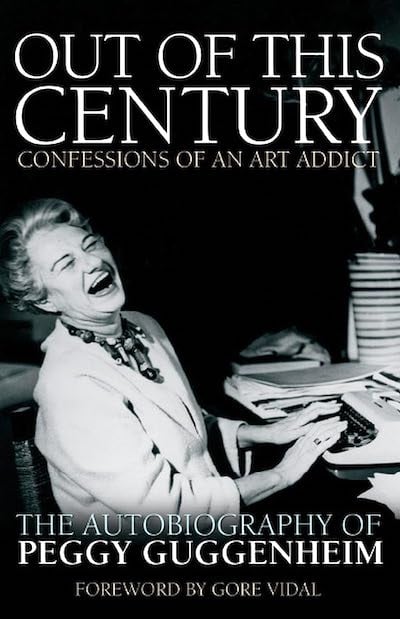
. . . . . . . . . . .
Out of This Century
Peggy’s first version of her autobiography, Out of This Century, was published in 1946. She had begun serious work on the project in the summer of 1944 while staying at Cherry Grove Hotel on Fire Island.
Her assistant Marius Bewley recalled her writing three sentences to a page in green ink, propped up in bed. Her original title for the book was Five Husbands and Some Other Men. It was Laurence Vail who (fortunately) suggested Out of This Century instead.
It was a frank, very revealing, and sometimes flippant look back at her life, focusing much more on her numerous personal relationships and the bohemian atmosphere of Paris, London, and New York than her art collections or love of literature.
Peggy claimed that she intended it to be honest rather than shocking. She still made a somewhat thin attempt to change the names of her friends, relatives, and lovers: Laurence Vail became Florenz Dale, Kay Boyle became Ray Soil, and the artist Dorothea Tanning became Annacia Tinning.
Her now ex-husband Max Ernst, however, remained Max Ernst. Peggy stuck by her portrait of him as self-serving, unfaithful, and cruel. Max’s son Jimmy — Peggy’s secretary, assistant, and close friend — was appalled by its “devastating pettiness.”
The book received terrible critical reviews. Time wrote that the “all-too-frank” memoir was “as flat and witless as a harmonic rendition of the Liebstod,” while in The New York Times, E. V. Winebaum declared, “It is useless to wonder what stimulates a well-known woman to write a book like this. …To be shocked is to fall into the trap laid so carefully and knowingly by the author.”
The Chicago Tribune proposed that Out of My Head would have been a more suitable title. Elizabeth Hardwick wrote in The Nation that the book contained an “astonishing lack of sensibility,” “limited vocabulary,” and “primitive style.”
However, Peggy’s friends – perhaps surprisingly, since many were in the book – were far more encouraging. Janet Flanner, a long-time columnist for The New Yorker, wrote, “Her detachment in looking back on life struck me as remarkable and, in its way, quite admirable. I felt she was telling the truth.”
Gore Vidal said, “What I really liked about Peggy was her writing. I admire her style which was unaffected but effective. She was almost as good as Gertrude Stein. High praise. And a lot funnier.”
The memoir sold poorly and was not reprinted.
. . . . . . . . . .
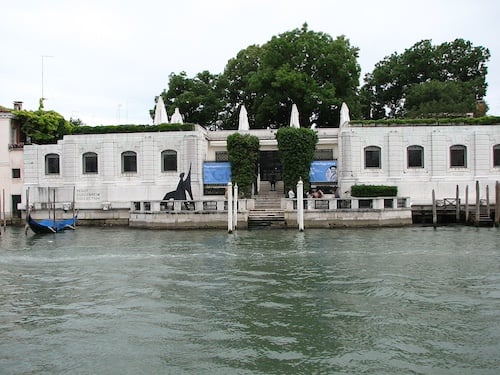
. . . . . . . . . .
Return to Europe, and further memoirs
Peggy returned to Europe in 1947, this time establishing herself in Venice. She bought the Palazzo Venier dei Leoni, a mid-eighteenth century building on the Grand Canal, where she lived with her 11 dogs and exhibited her collections for the rest of her life.
Three afternoons a week, visitors were allowed to roam through her house and view her collection: “Fifty percent of [them] genuinely want to see my collection; the others to get what they consider a celebrity.” Some of them got more than they perhaps bargained for, as Peggy could sometimes be seen sunbathing naked on the roof.
It was there, during the 1950s, that she began work on a second edition of her autobiography. Confessions of an Art Addict focused largely on her art career and omitted almost all the more private details of her life in Out of This Century
Then, twenty years later, she revised it yet again. “I seem,” she wrote, “to have written the first book as an uninhibited woman and the second one as a lady who was trying to establish her place in the history of modern art. That is perhaps why the two books read so differently.”
The third volume, called Out of This Century: Confessions of an Art Addict, reads, according to Peggy’s biographer Francine Prose, “like the work of an uninhibited woman who had already established her place in art history.”
The scandalous details of the first edition were restored, along with almost all of her friends’ real names, and combined with much of the art-focused material from Confessions of an Art Addict. In the book’s opening line, Peggy announces, “I have no memory,” and the style of the prose — at once sharp and girlish, upper-class clipped and gossipy — is said to resemble that of Two Serious Ladies, the novel published by Peggy’s friend Jane Bowles in 1943.
But, as always with autobiography, there was much that Peggy withheld. The “capricious and slightly daffy ingénue” that she portrays in the pages of the book was only one facet of an intelligent, determined woman who worked hard to run her galleries, who built a remarkable art collection, who funded political causes and supported a long list of artists and writers.
Her self-portrayal is closer to what some of her friends sometimes thought of her: dim-witted, promiscuous, tight with money, politically naive, self-involved, and much wealthier than she was.
Out of This Century isn’t widely read and yet, Francine Prose argues, it is “fully as well crafted, as original, and as engaging as Nightwood…[Peggy’s] memoir is more amusing and incisive than much of what has been written about her, during her life and after her death.”
. . . . . . . . . .
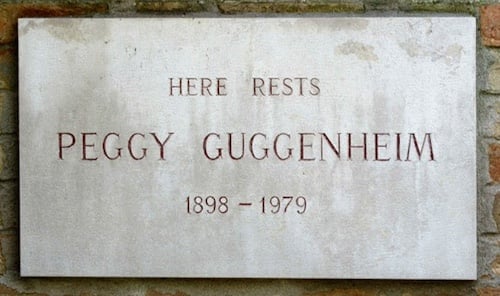
. . . . . . . . . .
Last years
Peggy suffered a tragedy in 1967 when her daughter Pegeen — by this time an alcoholic painter who had struggled with addictions to Valium and sleeping pills — died in mysterious circumstances at her home in Paris. Peggy was informed while on a trip to Mexico and never recovered from the loss.
In the 1970s, she donated first the Venetian Palazzo and then her collection to the Solomon R. Guggenheim Foundation, and the Foundation still operates the Peggy Guggenheim Collection in Venice today. Its estimated worth is around $30 million.
She died of a stroke on December 23, 1979, and her ashes were placed in a corner of the garden of her museum.
. . . . . . . . . . .
Contributed by Elodie Barnes. Elodie is a writer and editor with a serious case of wanderlust. Her short fiction has been widely published online and is included in the Best Small Fictions 2022 Anthology published by Sonder Press. She is Books & Creative Writing Editor at Lucy Writers Platform, she is also co-facilitating What the Water Gave Us, an Arts Council England-funded anthology of emerging women writers from migrant backgrounds. She is currently working on a collection of short stories, and when not writing can usually be found planning the next trip abroad, or daydreaming her way back to 1920s Paris. Find her online at Elodie Rose Barnes.
Further reading and sources
- Out of This Century: Confessions of an Art Addict by Peggy Guggenheim, Andre Deutsch (2005)
- Peggy Guggenheim: The Shock of the Modern by Francine Prose, Yale University Press (2016)
- Peggy Guggenheim: The Life of an Art Addict by Anton Gill, Harper Collins (2010)
- Peggy Guggenheim: Mistress of Modernism by Mary Dearborn, Virago (2007 )
- Rough Draft: The Modernist Diaries of Emily Holmes Coleman 1929-1937, edited by Elizabeth Podnieks,
University of Delaware Press (2012) - Hayford Hall: Hangovers, Erotics, and Modernist Aesthetics, edited by Sandra Chait and Elizabeth Podnieks,
Southern Illinois University Press (2005)
Leave a Reply